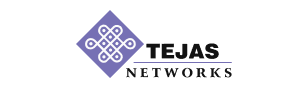High-capacity optical communications is a key technology advance that is driving network transformation in Core and Long-haul networks. Thanks to advances in this area, a single optical fiber strand is today capable of carrying tens of terabits of traffic today through modern techniques such as Dense Wave Division Multiplexing (DWDM), Optical Amplification, Reconfigurable Optical Add-Drop Multiplexing (ROADM) and coherent optical processing. Current telecommunications networks would not be able to scale to deliver thousands of services to billions of subscribers or create high-capacity information superhighways at the lowest cost per bit without these new technologies.
DWDM
DWDM enables multiple optical wavelengths to be multiplexed on a single fiber strand and thereby conserves expensive fiber reserves. While initial DWDM systems were typically limited to carrying 2.5Gbps of bandwidth per wavelength, recent advances in coherent DWDM technology can deliver 100G and 100G+ bit rates per wavelength over longer distances at the lowest cost per bit. Coherent DWDM unlocks significant advantages by using advanced light manipulation techniques. It transmits data by encoding information on the amplitude, phase, and polarization of light waves. Additionally, sophisticated digital signal processing compensates for signal distortions caused by chromatic dispersion and polarization mode dispersion (CD, PMD), enabling longer reach and higher capacity. Coherent DWDM systems also support advanced Forward Error Correction (FEC) mechanisms to reduce regeneration requirements and expand transmission reach over newly laid as well as old fiber installations.
DWDM enables multiple optical wavelengths to be multiplexed on a single fiber strand and thereby conserves expensive fiber reserves. While initial DWDM systems were typically limited to carrying 2.5Gbps of bandwidth per wavelength, recent advances in coherent DWDM technology can deliver 100G and 100G+ bit rates per wavelength over longer distances at the lowest cost per bit. Coherent DWDM unlocks significant advantages by using advanced light manipulation techniques. It transmits data by encoding information on the amplitude, phase, and polarization of light waves. Additionally, sophisticated digital signal processing compensates for signal distortions caused by chromatic dispersion and polarization mode dispersion (CD, PMD), enabling longer reach and higher capacity. Coherent DWDM systems also support advanced Forward Error Correction (FEC) mechanisms to reduce regeneration requirements and expand transmission reach over newly laid as well as old fiber installations.

OTN
Optical Transport Network (OTN) as an ITU standard (G.709), was originally designed to provide a protocol-independent wrapper of client data. In recent times, OTN is being used to perform primarily two additional functions: a) Efficient Sub-Lambda Grooming: DWDM layer is capable of handling traffic at a wavelength layer. Since DWDM by itself does not offer any way to consolidate partially filled wavelengths (e.g., loosely filled 100Gbps wavelengths) this leads to a significant bandwidth wastage. OTN solves this problem by providing sub lambda grooming through an OTN cross-connect. b) Bypass of Transit Traffic: On a cost per Gbps of switching capacity, routers tend to be much more expensive than OTN fabrics. By substituting OTN for a significant part of the switching capacity (the transit traffic), operators can reduce the overall costs significantly and save expensive router ports to reduce overall capex. Also, OTN fabrics consume less power compared to routing fabrics and traditional TDM cross-connects used to groom traffic at lower speeds such as 2 Mbps.
Optical Transport Network (OTN) as an ITU standard (G.709), was originally designed to provide a protocol-independent wrapper of client data. In recent times, OTN is being used to perform primarily two additional functions: a) Efficient Sub-Lambda Grooming: DWDM layer is capable of handling traffic at a wavelength layer. Since DWDM by itself does not offer any way to consolidate partially filled wavelengths (e.g., loosely filled 100Gbps wavelengths) this leads to a significant bandwidth wastage. OTN solves this problem by providing sub lambda grooming through an OTN cross-connect. b) Bypass of Transit Traffic: On a cost per Gbps of switching capacity, routers tend to be much more expensive than OTN fabrics. By substituting OTN for a significant part of the switching capacity (the transit traffic), operators can reduce the overall costs significantly and save expensive router ports to reduce overall capex. Also, OTN fabrics consume less power compared to routing fabrics and traditional TDM cross-connects used to groom traffic at lower speeds such as 2 Mbps.
The current state-of-the-art 100G/100G+ DWDM systems such as from Tejas are designed to transmit up to 1.2 Tbps per wavelength channels and total capacity of up to 64 Tbps. Tejas DWDM platform is highly flexible and supports a programmable mix of SDH/SONET, Ethernet, OTN, Storage and MPLS-TP client services using a combination of transponders, mux-ponders and switching cards. Advanced network functions such as multi-degree colorless/ directionless/ contention-less optical switching (CDC ROADM), universal terabit-scale OTN/PTN cross-connects (DXC) and generalized MPLS protocols (GMPLS) for efficient automated switching at the wavelength layer enable the system to optimally pack service traffic over fewer wavelengths and engine1er a highly cost-effective solution in high-bandwidth DWDM networks.
Tejas Offerings – Key Highlights

Gbps to Tbps Range Capacity

Multiple Technologies – DWDM, OTN, PTN in Same Platform

Improved FEC and Comprehensive Service Monitoring with TCM

Router Bypass for Overall TCO Optimization

ODUFlex for Efficient Bandwidth use




